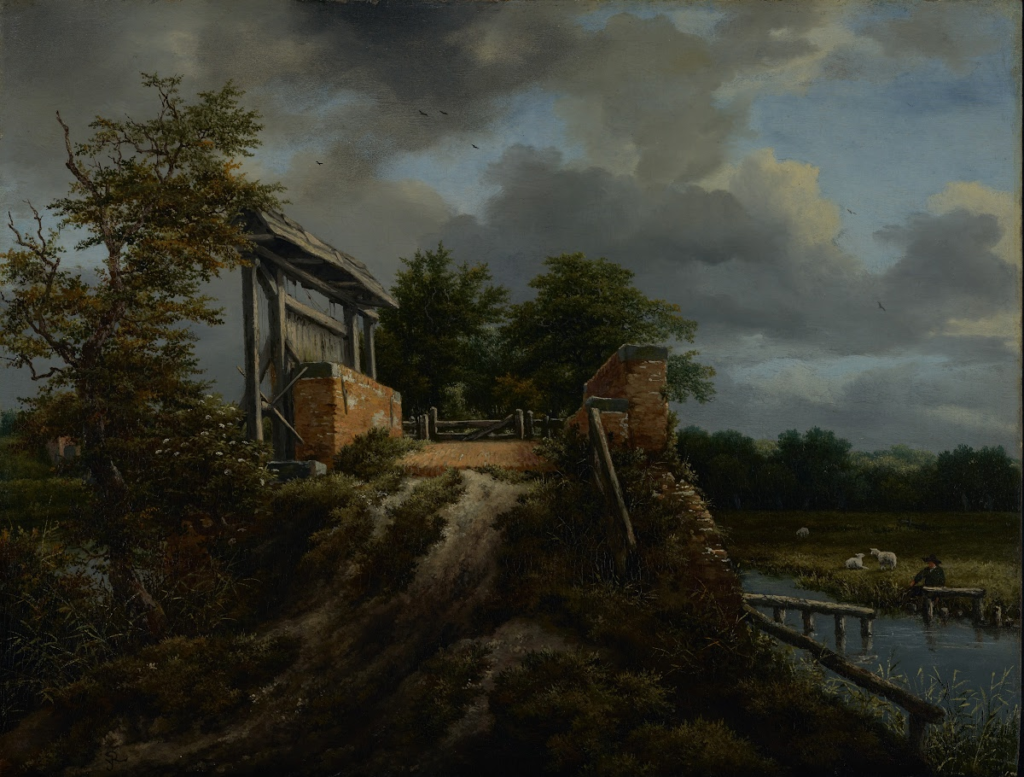Before the 16th century, landscape didn’t really exist as a genre in its own right. Landscapes were merely seen as backgrounds for portraits and other forms of paintings. the term “landscape comes from the Dutch word “landschnap” which means “region” or “tract of land” but became associated with the art in the early 1500s, this is due to the fact that in the Netherlands landscapes be came popular with protestants to decorate their homes. Outside the Netherlands, landscapes often depicting scenes from mythology or biblical settings, as well as historical scenes.
The 17th century brought around the ear of classical landscapes. Rome became the ideal place for landscapes to be painted. Everything within the paintings became purposefully placed to create the balanced and timeless mood to help the paintings seem harmonious. Many of these landscapes sought to illustrate an ideal landscape recalling Arcadia, a legendary place in ancient Greece known for its quiet pastoral beauty. However, despite the commissions and popularity of them they remained low in the hierarchy of the academies.

The late 18th century saw Pierre-Henri de Valenciennes change the views on landscape paintings, he saw them as something to be celebrated and considered with a worthy status. In 1800 he published the Eléments de perspective practique which emphasized the aesthetic ideal of the “historic landscape.” Generations of French landscape painters would benefit from this book and the recognition Valenciennes’ received.
As the 19th century brought round the industrial revolution, the standard hierarchy of art collapsed land scape paintings gained in popularity. Barbizon painters such as Théodore Rousseau and Charles Daubigny became less concerned with idealized, classical landscapes and focused more on painting out-of-doors directly from nature—a practice known as plein air painting. The 19th century also saw the start of landscape photography which would greatly influence the landscape painters’ compositional choices. Courbet’s radical painting techniques and independent spirit paved the way for the next generation of painters including Claude Monet, Camille Pissarro, Auguste Renoir, and Alfred Sisley, these would become some of the most famous painters in history, other wise know as the impressionists.

During the 20th century, artist used landscape photography to create interpretations of the land through pictorial effects and, later, through formal compositions of close-up, cropped views of the landscape. Photographer Ansel Adams captured attention with his breath-taking views of the wild beauty of the American West. In the second half of the 20th century, the definition of landscape was challenged and pressed to include concepts like urban landscapes, cultural landscapes, industrial landscapes, and landscape architecture. Today, the landscape continues to be a subject artists turn to when contemplating the ways we relate to the places where we live and the impact we as humans have on the land.
